U.S. Lighthouse Service Pennant
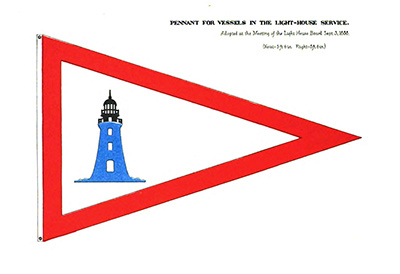
(Maine Lights Today archives)
An eye-catching pennant once flew proudly aboard Lighthouse Service vessels, and later at the best kept light station in each district during the era of the United States Lighthouse Service.
This triangular shaped flag was white in color, with a red border and blue silhouette lighthouse situated within the widest part. According to the 1888 Annual Report of the Light-House Board, it was “adopted at the meeting of the Light-House Board, September 3, 1888,” and was designated as a “pennant for vessels in the Light-House Service.” The report noted that the pennant’s dimensions were “(hoist) 5 feet 6 inches and (flight) 8 feet 6 inches.”
From 1888 to 1911, this pennant was exclusively displayed aboard underway vessels carrying out the work of the Lighthouse Service, but in 1912, Commissioner George Putnam designated the pennant for an additional purpose.
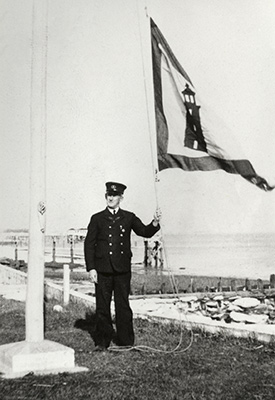
(Photo courtesy of Harry Spencer, Jr.)
The 1912 Reports of the Department of Commerce and Labor, explains the additional purpose, noting, “To promote efficiency and friendly rivalry among lighthouse keepers, a system of efficiency stars and pennants has been established.” The report went on to state, “The efficiency pennant, being the regular lighthouse pennant, is awarded to the station in each district showing the highest efficiency for a year, and may be flown during the succeeding year.”
Interestingly, both the 1915 Instructions to Employees of the United States Lighthouse Service and the 1918 Regulations for the United States Lighthouse Service no longer used the word “pennant” but rather called it the “efficiency flag.”
The 1918 regulations said, “The efficiency flag shall be the regulation Lighthouse Service flag, and shall never be displayed above or on the same staff as the national colors.” In addition, “This emblem shall apply to light stations only.”
Light stations who received the efficiency flag were permitted to retain it for the allotted time so long as their keeper continued to maintain the same high standard of efficiency throughout the year for which the emblem was originally awarded.
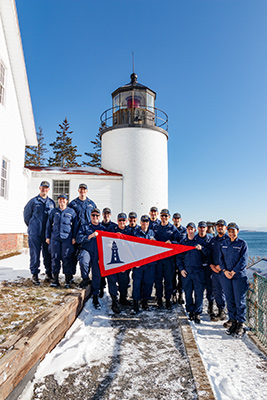
(Photo by Dominic Trapani)
In addition, the district inspector was instructed to issue a circular letter after the start of the new fiscal year in July announcing the light station awarded the efficiency pennant and listing the names of the light keepers serving at the station. This letter was to focus on the general efficiency and neatness of the station and its personnel.
When the lighthouse efficiency flag was first instituted in 1912, the honor was awarded on a fiscal year basis; however, on August 15, 1916, the United States Lighthouse Service changed the timing of the award from the beginning of the fiscal year (July) to a calendar year (January). By 1931, the Lighthouse Service switched back to calling the award an efficiency pennant rather than an efficiency flag.
Though the United States Lighthouse Service did not state their motivation for establishing a friendly rivalry or competition between lightkeepers, it can be assumed that the concept was instituted as part of a larger effort at the time to achieve better organizational efficiency.
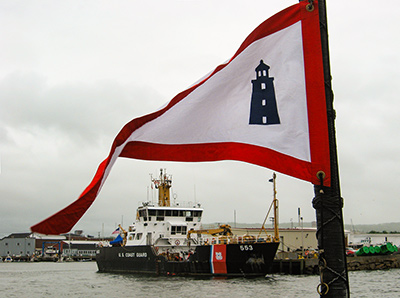
(Photo by Bob Trapani, Jr.)
In the year prior to the efficiency flag being established, we find that Commissioner George Putnam was quoted in the 1911 Report of the Department of Commerce and Labor as saying, “The Committee on Economy and Efficiency of this Department, appointed in September, 1910, has cooperated with the President’s Commission on Economy and Efficiency as fully as the regular work of individual members of the committee would permit. I may say that members have shown great devotion in their efforts to advance the general economy and efficiency program without permitting their regular work to suffer.”
During the fiscal year 1912, Commissioner Putnam revised the lighthouse districts and instituted a uniform system of inspection for light stations and lightships.
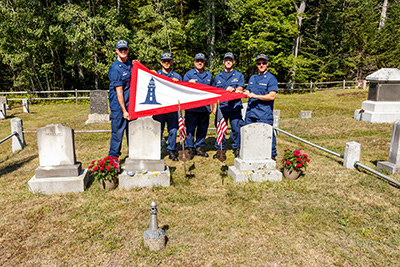
(Photo by Dominic Trapani)
The 1912 Reports of the Department of Commerce and Labor, expanded on this restructuring process, stating, “During the fiscal year 1912 the reorganization of the Lighthouse Service under the provisions of the act of Congress approved June 17, 1910, was practically completed. After two years of operation of the Service under this act it is believed that the efficiency of the Service has been greatly increased, and that the work is much more economically performed.”
The report went on to say, “All of the lighthouse districts, with the exception of the three river districts, are now in charge of civilian inspectors. The selection of thoroughly competent men for positions as lighthouse inspectors is necessary to the success of the plan of reorganization adopted by Congress.”
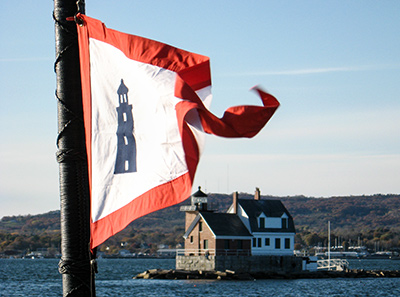
(Photo by Bob Trapani, Jr.)
The concept of awarding efficiency flags and efficiency stars to light stations and keepers respectively was one that the U.S. Lighthouse Service wanted its district inspectors to take quite seriously. According to the 1918 Regulations for the United States Lighthouse Service, “A close degree of discrimination shall be exercised by inspectors in order to make these awards of value.”
The regulations went on to state, “Letters of commendation may be issued by the inspector to light keepers for exceptional efficiency of their stations, lifesaving, or other acts deserving special mention. When a keeper is commended for the general efficiency of his station, duplicate letters shall be sent to each assistant unless reasons exist for contrary action. Letters of commendation shall remain the personal property of the light keeper concerned, the receipt being noted in the station journal and a copy placed in the records of the inspector’s office.”
The United States Lighthouse Service made it known that they desired to praise and reward the devotion to duty of its keepers. For keepers who were awarded such an honor as the efficiency flag, the moment no doubt was one of great pride and satisfaction.
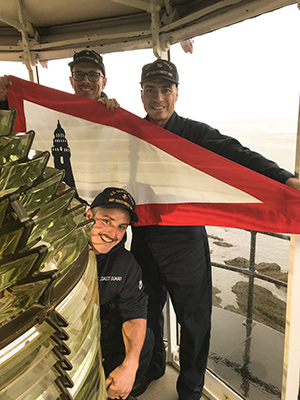
(Photo by Caitlin Pascoe)
Though the Lighthouse Service flag ceased to be a part of lighthouse life when the civilian service was merged with the United States Coast Guard in 1939, the flag’s heritage still shines bright.
Today, Coast Guard units and cutters involved in maintaining lighthouses and other aids to navigation (ATON) will display the flag or occasionally fly it from the jackstaff of a cutter while underway working aids. There is no requirement to do so, but rather, it is more a way for those who work ATON to show pride in their lightkeeping roots, which can be traced back to the dedicated men and women of the United States Lighthouse Service.
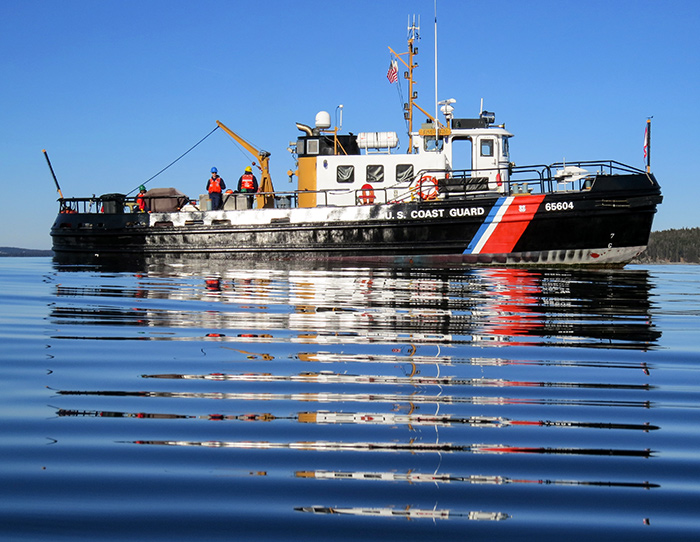
(Photo by Bob Trapani, Jr.)